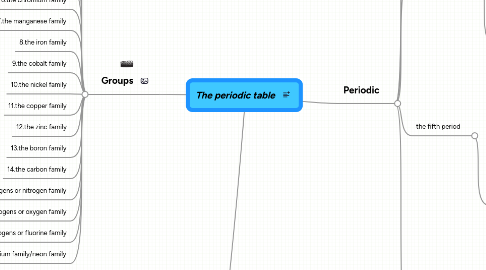
1. The value of the table gradually became clear, but not its meaning. Scientists soon recognized that the table's arrangement of elements in order of atomic weight was problematic. The atomic weight of the gas argon, which does not react readily with other elements, would place it in the same group as the chemically very active solids lithium and sodium. In 1913 British physicist Henry Moseley confirmed earlier suggestions that an element's chemical properties are only roughly related to its atomic weight (now known to be roughly equal to the number of protons plus neutrons in the nucleus). What really matters is the element's atomic number--the number of electrons its atom carries, which Moseley could measure with X-rays. Ever since, elements have been arranged on the periodic table according to their atomic numbers. The structure of the table reflects the particular arrangement of the electrons in each type of atom. Only with the development of quantum mechanics in the 1920s did scientists work out how the electrons arrange themselves to give the element its properties.
2. Groups
2.1. 1.the alkali metals or lithium family
2.1.1. New node
2.2. 2.the alkaline earth metals or beryllium family
2.3. 3.the scandium family
2.4. 4.the titanium family
2.5. 5.the vanadium family
2.6. 6.the chromium family
2.7. 7.the manganese family
2.8. 8.the iron family
2.9. 9.the cobalt family
2.10. 10.the nickel family
2.11. 11.the copper family
2.12. 12.the zinc family
2.13. 13.the boron family
2.14. 14.the carbon family
2.15. 15.the pnictogens or nitrogen family
2.16. 16.the chalcogens or oxygen family
2.17. 17.the halogens or fluorine family
2.18. 18.the helium family/neon family
3. Periodic
3.1. the first period
3.1.1. Hydrogen Helium
3.2. the second period
3.2.1. Lithium Beryllium Boron Carbon Nitrogen Oxygen Fluorine Neon
3.3. the third period
3.3.1. Sodium Magnesium Aluminum Silicon Phosphorus Sulfur Chlorine Argon
3.4. the fourth period
3.4.1. Potassium Calcium Scandium Titanium Vanadium Chromium Manganese Iron Cobalt Nickel Copper Zinc Gallium Germanium Arsenic Selenium Bromine Krypton
3.5. the fifth period
3.5.1. Rubidium Strontium Yttrium Zirconium Niobium Molybdenum Technetium Ruthenium Rhodium Palladium Silver Cadmium Indium Tin Antimony Tellurium Iodine Xenon
3.6. the sixth period
3.6.1. Cesium Barium Cerium Praseodymium Neodymium Promethium Samarium Europium Gadolinium Terbium Dysprosium Holmium Erbium Thulium Ytterbium Lutetium Hafnium Tantalum Tungsten Lanthanum Rhenium Osmium Iridium Platinum Gold Mercury Thallium Lead Bismuth Polonium Astatine Radon
